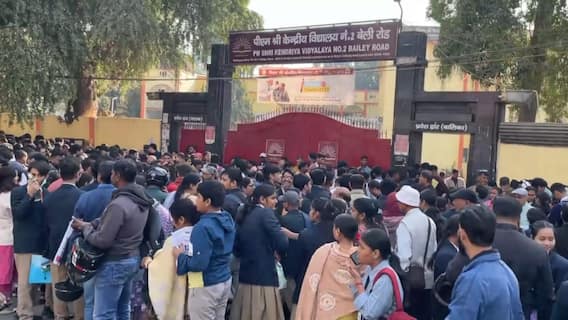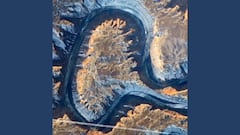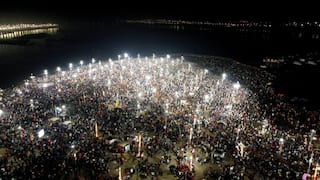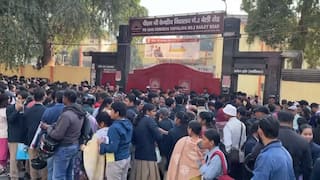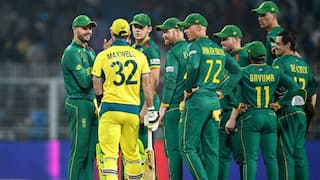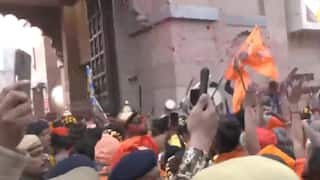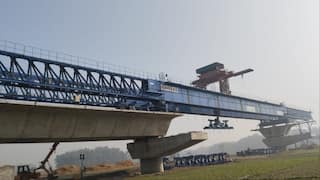EXPLAINED | Russia Accused Of Using Vacuum Bombs In Ukraine. Know Why It Is Called 'Father Of All Bombs'
A vacuum bomb, dubbed the 'father of all bombs', works by using oxygen from the surrounding air to generate a high-temperature explosion, making it far deadlier than a conventional weapon.

New Delhi: Ukraine's Ambassador to the United States, Oksana Markarova, has accused Russia of attacking Ukrainians using thermobaric bombs, also known as vacuum bombs, during its invasion of the country.
Meanwhile, human rights groups said this week that Russian forces appeared to have used cluster munitions, which are weapons consisting of a container that opens in the air and scatters large numbers of bomblets, according to media reports.
Amnesty International, a non-governmental organisation focused on human rights, accused Russia of attacking a preschool in northeastern Ukraine, in which civilians were seeking shelter, news agency Reuters reported.
Thermobaric bombs or vacuum bombs are controversial because they are much more devastating than conventional explosives of similar size. Also, anyone caught in the blast radius of a vacuum bomb will be severely injured. Fuel-air explosives are one of the best known types of thermobaric bombs, and are popularly known in Russia as vaccuum bombs.
UKRAINE-RUSSIA CONFLICT: FULL COVERAGE
What Are Vacuum Bombs?
A vacuum bomb, dubbed the 'father of all bombs', works by using oxygen from the surrounding air to generate a high-temperature explosion, making it far deadlier than a conventional weapon. A vaccuum bomb or a thermobaric bomb is capable of vapourising human bodies, crushing internal organs, and reducing cities to rubble, causing huge loss of life, according to an article published by Duke University, North Carolina.
Vacuum bombs are more powerful than conventional high-explosive munitions of comparable size, and are more likely to kill and injure people in bunkers, shelters, and caves, and kill and injure in a particularly brutal manner over a wide area.
How Do Vacuum Bombs Work?
Vaccum bombs use different combinations of heat and pressure to produce different huge explosive effects. An initial explosion produces a pressure wave powerful enough to flatten buildings or penetrate into caves or other structures, according to an article published by University of Portsmouth, England. The explosion will also disperse highly flammable fuel particles around its vicinity.
Thermobaric bombs instantaneously suck out the oxygen from the body a person caught in the blast radius. Toxic, flammable particles which enter into one's body start killing the person from the inside out.
Thermobaric bombs first appeared in modern form in the 1960s, the article said. Russia, the US, China, India, and many other countries are said to have used them.
The flammable particles, often aluminium-based, ignite a fraction of a second later, and burn at very high temperatures. The two blasts combine for maximum effect, and use up all the oxygen in the surrounding air, creating a vacuum. Hence, these bombs are known as vacuum bombs.
The resulting vacuum can be powerful enough to rupture the lungs and eardrums of anyone nearby, the article said.
The Syrian and Russian governments were previously accused of using thermobaric bombs against rebel forces, which had devastating impacts on nearby civilians.
The fuel in a thermobaric weapon consists of a monopropellant (substance used as fuel without an additional oxidising agent, and which releases energy through exothermic chemical decomposition) and energetic particles. The monopropellant detonates in a manner similar to trinitrotoluene (TNT), one of the most popular explosive compounds. The energetic particles burn rapidly in the surrounding air, resulting in an intense fireball and high blast overpressure, according to an article published by GlobalSecurity.org, an independent organisation focused on national and international security issues.
Performance enhancement in thermobaric bombs is achieved by addition of excess metals to the explosive composition. The primary metals of choice are aluminium and magnesium.
What Are The Rules For Use Of Incendiary Weapons?
Incendiary weapons are weapons which produce heat and fire through the chemical reaction of a flammable substance, and cause excruciating burns and destroy homes and other civilian structures. Vacuum bombs have incendiary effects on humans and other life forms.
The Protocol III of the Convention on Certain Conventional Weapons (CCW) does have various limitations on the use of incendiary weapons. The CCW states that it is further prohibited to make any military objective located within a concentration of civilians the object of attack by means of incendiary weapons other than air-delivered incendiary weapons, except when such military objective is clearly separated from the concentration of civilians, and all feasible precautions are taken with a view to limiting the incendiary effects to the military objective.
Also, all feasible precautions are to be taken with a view to avoiding, and in any event to minimising incidental loss of civilian life, injury to civilians, and damage to civilian objects, according to the CCW.
When Were Thermobaric Bombs Used Before?
Thermobaric bombs were used by the German army in World War II. Austrian physicist Mario Zippermayr was the inventor.
These weapons were not widely developed until the 1960s, when the United States used them in the Vietnam War.
On December 27, 1999, Russian forces were using fuel-air explosives in the fighting in Chechnya. The use of fuel-air explosives represented a dangerous escalation in the Chechnya conflict, and had important humanitarian implications, the Human Rights Watch, an international non-governmental organisation, said on its website.
Russia reportedly used the TOS-1 Buratino multiple launch rocket system (MLRS) against Syria in the Syrian civil war, which began in 2011.
According to an article published by American bimonthly magazine The National Interest, TOS-1 Buratino is a unique Russian self-propelled MLRS whose speciality is obliterating heavily fortified positions.
TOS, which stands for heavy flame thrower, launches a rocket carrying a fuel-air explosive.
Trending News
Top Headlines













